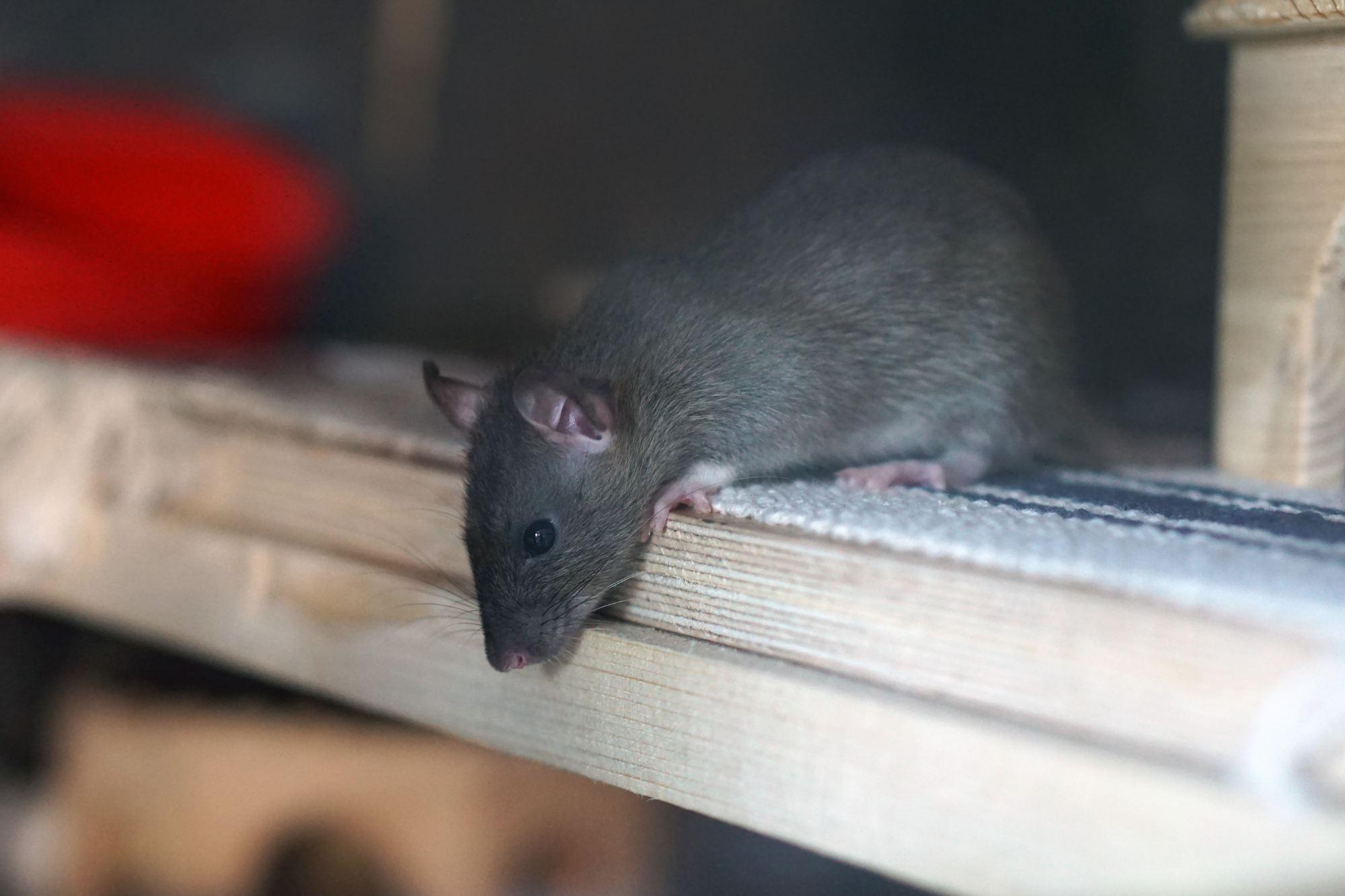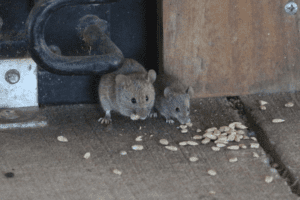Primary Season: Summer, Fall, Winter, Spring
The two most common types of rats in Wisconsin and Minnesota are roof rats and Norway rats. Roof rats get their name from commonly seeking shelter in the upper parts of buildings and are also referred to as black rats or ship rats. Roof rats are smaller than Norway rats measuring around 8-10 inches long. Norway rats are your typical brown sewer or street rat. They are larger than roof rats with their bodies measuring around 16 -20 inches long.
Rats begin looking for a cozy spot to call home in the autumn months and it only takes two things for them to find your house a desirable spot to stay; shelter and food. If you’ve got a warm, safe place for them to build their nest and food that’s left out or not stored properly, you may find yourself with an extra, uninvited guest.
HOW TO TELL THE DIFFERENCE BETWEEN A RAT AND MOUSE INFESTATION
Rat droppings are about 1/2 inch long and are dark black, whereas mouse droppings are about the size of a grain of rice and brown in color. Rats will leave larger gnaw marks and can chew through walls, flooring, insulation, wiring, and soft metals, such as lead and aluminum. Rats are quite a bit larger than mice and will make more noise than a mouse, especially during the night.
MADSEN METHOD
If you suspect a rat infestation, call Madsen Pest Management. Here’s the process our Madsen team will follow to get rid of your rodent problem:
Property Inspection
First, our technician will look for entry points to your home and check around your home for nests.
Set Traps
Identify
Identify the species of rat you are dealing with.
Seal Entry Points
HOW TO PREVENT FURTHER RAT INFESTATIONS
- Double-check and seal off all entry points with caulk or steel wool
- Keep basement and attic tidy
- Eliminate excess moisture from the home
- Keep food in air-tight containers and store all food properly
- Throw away old, or unused food



RELATED RESOURCES:
6 SIGNS RODENTS HAVE MOVED IN FOR WINTER
They’re small. They’re stealthy. They’re quick. They’re quiet. They’re rodents. These tiny, gnawing mammals can be a real pain to get rid of…





